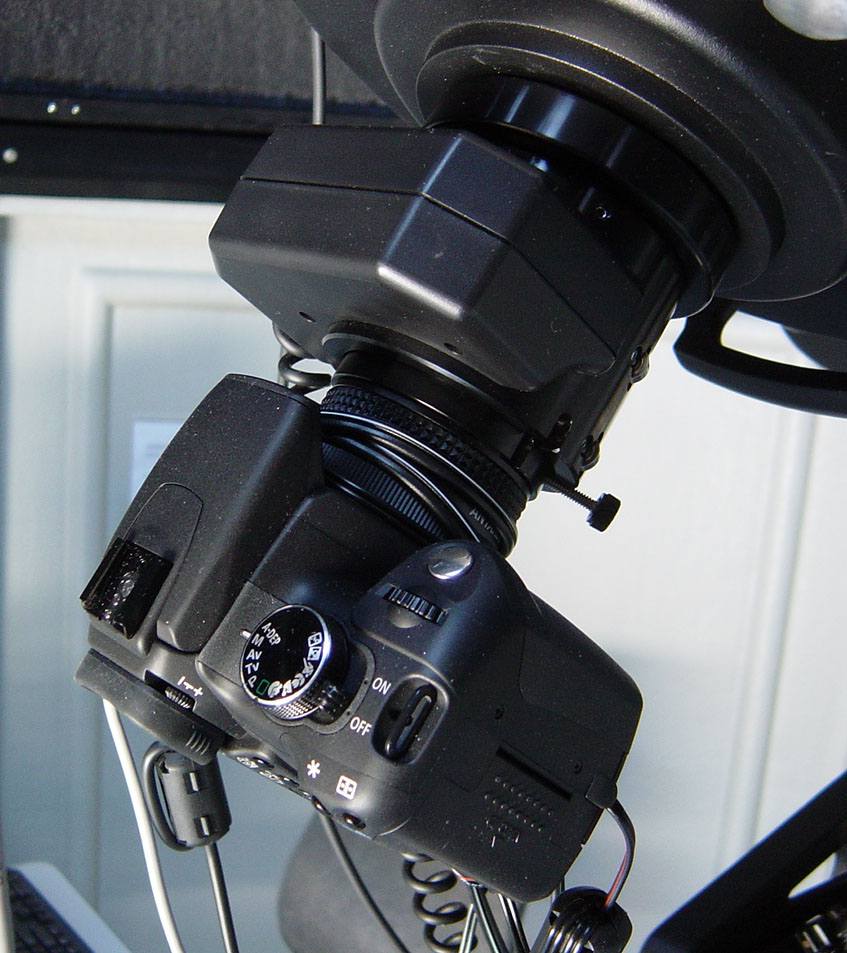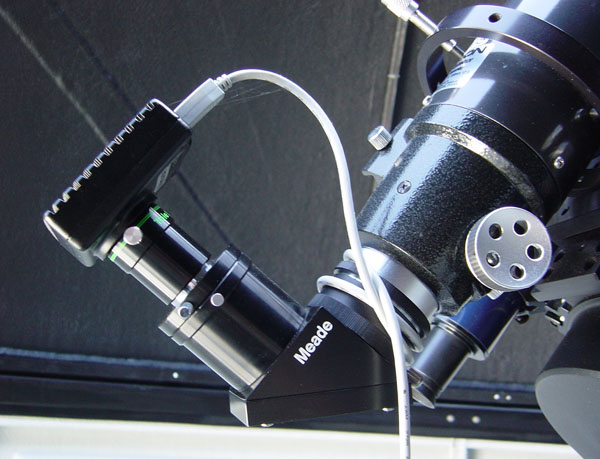Imagers - Kenthurst Observatory
Main menu:
- Home
- Blog
- Observatory
- Current Setup
- Current Images
- Original Setup
-
Original Images
- Meade LDX 10"
- Orion ED80
Imagers
Imagers

Above is the 8 megapixel Canon EOS 350D DSLR which connects at prime focus to the LX200GPS via a Meade f/6.3 focal reducer. The focal reducer is contained in a TA2P 2-
Another camera , a 6 megapixel Canon EOS 300D DSLR is used interchangeably. It has been modded, which is to say I have opened it up and removed the UV/IR filter window which was located just in front of the CMOS image sensor. This filter has been replaced by a clear optical glass blank which passes the H alph wavelength to a greater degree than does an unmodded camera. Unfortunately it then also passes unwanted IR wavelengths which can produce star bloating. To eliminate this a narrrow-

The guide camera (also capable of use for planetary imaging) is a Deep Sky Imager from Meade Instruments. It is relatively inexpensive and makes it possible to guide on stars down to about magnitude 10. It is powered from the USB cable which connects to to the back of the computer. Between the DSI and the Meade 2-